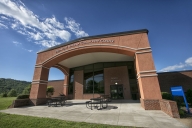You have /5 articles left.
Sign up for a free account or log in.

extracoin/Getty Images
When several colleges stopped charging students application fees in 2016, they found that more students applied for admittance. Trinity College in Connecticut was among the institutions for whom the strategy was successful. The percentage of admitted applicants who committed to enroll at Trinity, and who were the first in their families to go to college, jumped from 8 percent to 12 percent a year after the college stopped charging first generation students to apply.
Some colleges had long given up the revenue from application fees. Wellesley College dropped its fee in 2003. Reed College in Oregon did so in 2013. But most institutions kept collecting the fees.
At Stanford University, which is cited by many as having an expensive application fee, the charge is $90. (Many colleges charge $50 to $70, and some public institutions charge as little as $30.) Even Stanford’s fee might seem modest considering the nearly $79,000 it cost to attend this year. And students at all colleges that charge fees can apply for waivers on the fees.
Some research has shown that application fees can nonetheless discourage certain students from even applying. A 2013 study by Caroline Hoxby of Stanford University and Sarah Turner of the University of Virginia examined an experiment they conducted with high-achieving low-income students. A number of interventions -- including offering them fee waivers to 171 selective colleges -- were conducted to make these students more aware of their options. The students in the program were more likely than similar students outside the program to apply to more colleges, and to more competitive colleges.
The study and the experience of colleges that have gone fee-free have prompted more colleges -- especially liberal arts colleges -- to drop their application fees. And colleges are also looking for steps -- beyond test-optional admissions -- that will appeal to students.
"We have been looking at the barriers in front of students, and this is one," said Florence Hines, vice president for enrollment management and dean of admissions and financial aid at St. Lawrence University, in New York, which just adopted a free application.
Hines said the idea made sense "from an access and affordability perspective." Just because students can apply for a waiver doesn’t mean they will do so, she said. She said she’s aware the university will lose money by not charging, but for her the question was "Why are we still charging?"
Dickinson College, in Pennsylvania, is waiving its $65 fee for anyone who fills out the preapplication this year, which just asks for basic information about students and their academic interests.
Catherine McDonald Davenport, dean of admissions, said the preapplication is a tool that allows the college to reach out to students earlier in the process.
"For many families, it’s news that we can help them in hours besides 8 to 5 Eastern," she said.
Davenport said Dickinson adopted fee-free admissions to "put the option in front of people." She said that some middle-income families, too wealthy for the waivers, would also benefit.
"This is allowing students to opt in," she said.
Dickinson charged $65 per application and had 6,300 applications, and the college will have to make up the more than $400,000 in lost revenue.
Davenport appreciates that’s not a small sum, but said she cares more about the possibility of reaching new applicants.
"Sixty-five dollars is $65, but I believe this is the right thing to do."
Similar motivations were behind a move at McDaniel College, in Maryland, three years ago.
"When we think about the application process, we have to think about what extent our process reflects our values," said Janelle Holmboe, vice president for enrollment management. She said every year some applicants submit everything required but the fee.
"It seemed ridiculous to worry about the fee," she said.
In the three years since McDaniel dropped its $50 application fee, it has seen applications increase by 30 percent. It received 5,000 applications last year. Holmboe thinks the college will likely make up for the fees it lost with more students enrolling.
Macalester College dropped it $40 fee in April 2020, at the same time it announced it was making test-optional admissions a permanent policy.
"We didn’t want Macalester’s $40 application fee, or, for many low-income applicants, the process of obtaining an application fee waiver, to be a barrier in applying for admission," said Jeff Allen, vice president for admissions and financial aid. "When coupled with the observation that most of our Midwest liberal arts peer colleges no longer required an application fee or fee waiver in their admission requirements, it only made sense that this was the right direction for Macalester."
Carleton College also is application fee-free, as is Colorado College.
In the public sector, fee-free applications are being used to recruit specific groups of students.
For example, the State University of New York at Geneseo will not charge an application fee this year for students who are from Buffalo, Rochester or Syracuse -- three cities located in upstate New York, like Geneseo. The university gets far more applicants from the suburbs of those cities and from downstate New York and wanted to send a message to those in upstate cities.
Still, despite all the positive reasons admissions officials cite for not charging for applications, most colleges are still doing so.
Angel B. Pérez, CEO of the National Association for College Admission Counseling, said the answer to the question of application fees is "complicated."
"I do think it’s important to acknowledge that the application fees can often deter students from applying, especially those from the lowest-income backgrounds," he said.
But Pérez, who was vice president for enrollment and student success at Trinity when it switched to fee-free applications, said that "for many institutions, the application fee is a source of revenue. It’s small compared to other revenue sources, but no funding can be discounted these days.
"Would dropping the fee bring more students to the front door? Absolutely. But there are other challenges for colleges," he said. "Dropping the application fee could have detrimental effects on yield. If many more students apply because it’s free, colleges risk overinflating their pools and decreasing yield rates. I understand both perspectives, and the issue is more complex than the public discourse leads us to believe."








